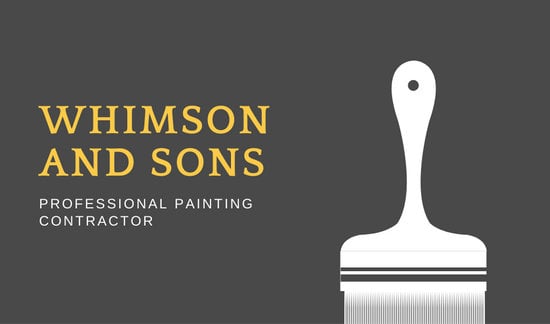Seasonal Considerations For Business Outside Painting: What You Need To Know
Seasonal Considerations For Business Outside Painting: What You Need To Know
Blog Article
Article Writer-Fox Rosendal
When you're planning an industrial exterior paint job, seasonal elements can make or damage your results. indoor painting twin cities 'll want to think about how temperature level and moisture effect paint application and drying times. Choosing the appropriate period can ensure your paint sticks properly and lasts longer. However which seasons are truly the very best for this sort of work? Let's discover the key elements that can impact your task's success.
The Effect of Temperature Level on Paint Application
When you're intending a commercial external painting task, the temperature can significantly influence how well the paint adheres and dries out.
Preferably, you intend to paint when temperature levels vary between 50 ° F and 85 ° F. If it's also cold, the paint may not cure effectively, leading to issues like peeling or splitting.
On the flip side, if it's also hot, the paint can dry as well rapidly, protecting against correct attachment and leading to an uneven finish.
You should likewise consider the moment of day; morning or late afternoon provides cooler temperatures, which can be a lot more positive.
Constantly check exterior painter plymouth for the certain paint you're making use of, as they usually offer advice on the perfect temperature range for ideal outcomes.
Moisture and Its Impact on Drying Times
Temperature level isn't the only ecological variable that influences your commercial external paint job; moisture plays a significant role as well. High moisture degrees can slow down drying times drastically, affecting the general quality of your paint task.
When the air is saturated with wetness, the paint takes longer to heal, which can cause issues like inadequate bond and a greater threat of mold growth. If you're repainting on a particularly damp day, be planned for extensive delay times between layers.
It's vital to check local climate condition and plan as necessary. Ideally, go for humidity levels between 40% and 70% for optimum drying.
Maintaining these consider mind guarantees your task remains on track and delivers a long lasting coating.
Best Seasons for Commercial Outside Paint Projects
What's the most effective season for your business exterior paint tasks?
Spring and very early loss are generally your best options. Throughout these periods, temperatures are light, and moisture levels are often lower, creating optimal conditions for paint application and drying.
Avoid summertime's intense heat, which can trigger paint to completely dry too quickly, resulting in inadequate attachment and finish. In a similar way, winter months's cool temperatures can hinder proper drying out and healing, taking the chance of the longevity of your paint task.
Aim for days with temperature levels between 50 ° F and 85 ° F for optimal outcomes. Keep in mind to inspect the regional weather prediction for rainfall, as wet problems can destroy your project.
Planning around these factors guarantees your painting project runs efficiently and lasts longer.
Verdict
To conclude, planning your commercial external painting tasks around seasonal factors to consider can make a significant difference in the outcome. By scheduling work during the ideal temperatures and humidity degrees, you'll make sure better adhesion and drying out times. Bear in mind to watch on neighborhood weather prediction and choose the right time of year-- spring and very early loss are your best choices. Taking these steps will certainly aid you accomplish a long lasting and professional surface that lasts.
